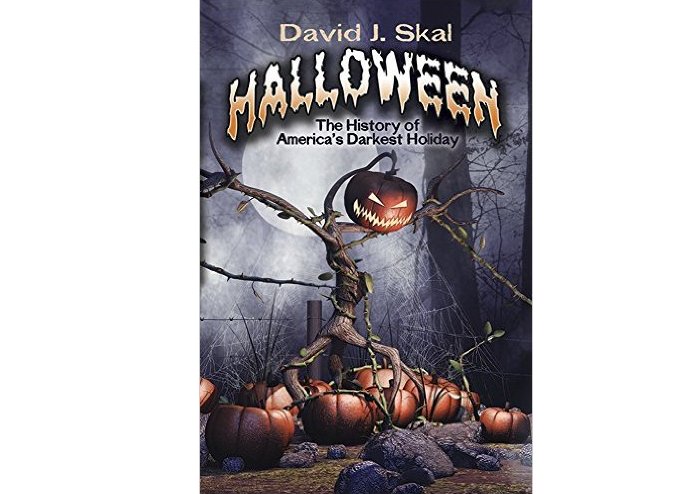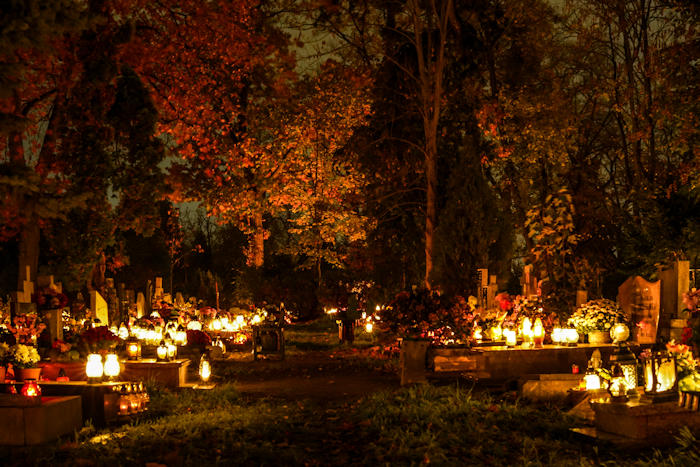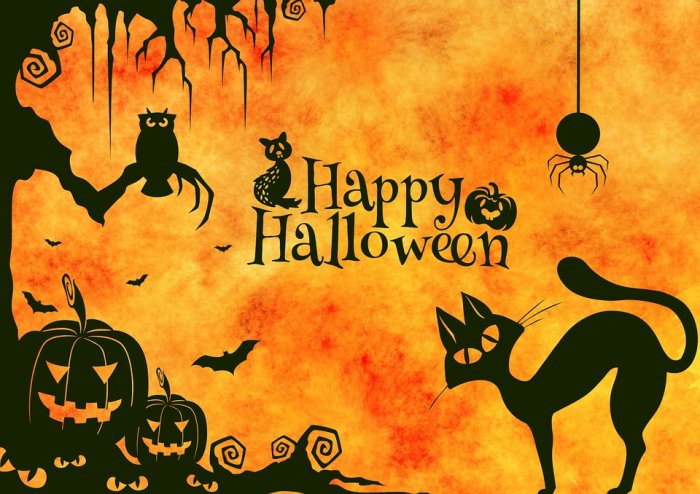Halloween: Facts And History About All Hallows’ Eve And Its Connection With Samhain – An Ancient Celtic Festival
Ellen Lloyd - AncientPages.com - On October 31, many of us celebrate Halloween, a tradition that is thought to have originated with the ancient Celtic festival of Samhain.
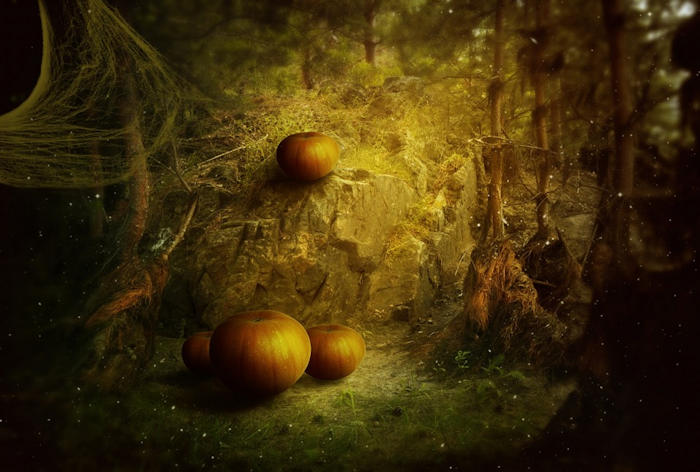 What is the connection between Halloween and Samhain? Credit: Public Domain
What is the connection between Halloween and Samhain? Credit: Public Domain
It is a time of celebration and superstition. We see carved, decorated pumpkins on the streets, people of all ages wearing scary costumes, and children wandering the neighborhood knocking on doors demanding treats.
Seeing through the eyes of an outsider unfamiliar with the tradition and history behind Halloween, this behavior can appear rather peculiar. So, how did it all start? What is the true meaning of Halloween, and why is the celebration associated with a 2,000-year-old ancient pre-Christian festival?
This article examines the facts and history of Halloween – also called All Hallows' Eve.
Samhain: An Ancient Celtic Festival
Most historians agree that Halloween dates back to the ancient Celtic festival of Samhain, celebrated 2,000 years ago in the area that is now Ireland, the United Kingdom, and northern France.
Credit: Public Domain
It was a time when people living there celebrated their New Year on November 1 Samhain (pronounced "sah-win"), which means "summer's end" in Gaelic, and this was a day that marked the end of summer and the harvest and the beginning of the dark, cold winter.
The worlds between death and the living became blurred. To ancient Celts, this was when ghosts of the dead returned to earth.
The ghosts of the dead were believed to damage crops and to combat the threat, ancient Celts often held raging bonfires – a fire was used as a common way to ward off evil spirits.
The practice continued throughout the region even after Christianity took hold in the Middle Ages, and the festival was renamed All Hallows' Eve. Later, the fires shrank in towns and were instead placed within turnips or gourds, which were inexpensive, readily available, and safe "containers."
Acclaimed cultural critic David J. Skal explores one of America's most perplexingly popular holidays in this original mix of personal anecdotes and social analysis. Skal traces Halloween's evolution from its dark Celtic history and quaint, small-scale celebrations to its emergence as mammoth seasonal marketing event.
Skal takes readers on a cross-country survey that covers remarkably divergent perspectives, from the merchants who welcome a money-making opportunity that's second only to Christmas to fundamentalists who decry Halloween a form of blasphemy and practicing witches who embrace it as a holy day. He also profiles individuals who revel in this once-a-year occasion to participate in elaborate fantasies. Their narratives, combined with the author's cultural analysis, offer a revealing look at an intriguing aspect of our national psyche. Read more
"Originally, they were simply pierced to emit light and were carried to scare away the spirits from the Otherworld who could enter the mortal realm," said Verlyn Flieger, a mythology specialist at the University of Maryland. Carving the gourds became common over time, Flieger explained. "Designed to ward off scary faces, they gradually took on the aspects of the very foes they were supposed to forestall," she said.
Halloween And All Souls Day
By 43 A.D., the Roman Empire had conquered most of Celtic territory. During the four hundred years they ruled the Celtic lands, two festivals of Roman origin were combined with the traditional Celtic celebration of Samhain. The first was Feralia, a day in late October when the Romans traditionally commemorated the passing of the dead. The second was a day to honor Pomona, the Roman goddess of fruit and trees.
The symbol of Pomona is the apple, and incorporating this celebration into Samhain probably explains the tradition of "bobbing" for apples practiced today on Halloween.
Acclaimed cultural critic David J. Skal explores one of America's most perplexingly popular holidays in this original mix of personal anecdotes and social analysis. Skal traces Halloween's evolution from its dark Celtic history and quaint, small-scale celebrations to its emergence as a mammoth seasonal marketing event.
All Souls Day - Credit: Adobe Stock - Caroline
Skal takes readers on a cross-country survey that covers remarkably divergent perspectives, from the merchants who welcome a money-making opportunity that's second only to Christmas to fundamentalists who decry Halloween a form of blasphemy and practicing witches who embrace it as a holy day. He also profiles individuals who revel in this once-a-year occasion to participate in elaborate fantasies. Their narratives, combined with the author's cultural analysis, offer a revealing look at an intriguing aspect of our national psyche. Read more
On May 13, 609 A.D., Pope Boniface IV dedicated the Pantheon in Rome in honor of all Christian martyrs, and the Catholic feast of All Martyrs Day was established in the Western church. Pope Gregory III (731–741) expanded the festival to include all saints and martyrs and moved the observance from May 13 to November 1.
By the 9th century, the influence of Christianity had spread into Celtic lands, where it gradually blended with and supplanted the older Celtic rites. In 1000 A.D., the church made November 2 All Souls' Day to honor the dead. It is widely believed that the church attempted to replace the Celtic festival of the dead with a related but church-sanctioned holiday.
All Souls Day was celebrated similarly to Samhain, with big bonfires, parades, and dressing up in costumes as saints, angels, and devils. The All Saints Day celebration was called All-hallows or All-hallowmas (from Middle English Alholowmesse, meaning All Saints' Day).
The night before it, the traditional night of Samhain in the Celtic religion, began to be called All-Hallows Eve and, eventually, Halloween.
Pumpkins Replaced Turnips
When Irish immigrants and descendants of the Celts came to America in the 1800s, they brought the tradition of Samhain. They soon noticed there were not enough turnips in America, so instead, the settlers started using pumpkins. Soon, a new tradition was born, and people began carving out faces and placing candles in pumpkins.
The pumpkins had a special meaning to the Irish, who believed that a dead headless man could rise from the grave, chop the heads of the living, and put it on himself.
Credit: Public Domain
Therefore, the Irish placed a pumpkin with a candle on the graves to scare away the headless man.
American Halloween Tradition Of "Trick-Or-Treating"
According to folklorist John Santino, "The tradition of dressing in costumes and trick-or-treating may go back to the practice of "mumming" and "guising," in which people would disguise themselves and go door-to-door, asking for food. Early costumes were usually hidden, often woven out of straw, and sometimes, people wore costumes to perform in plays or skits.
The practice may also be related to the medieval custom of "souling" in Britain and Ireland, when poor people would knock on doors on Hallowmas (November 1), asking for food in exchange for prayers for the dead.
Trick-or-treating didn't start in the United States until World War II, but American kids were known to go out on Thanksgiving and ask for food — a practice known as Thanksgiving begging.
Some Christians have expressed concern that Halloween is somehow satanic because of its roots in pagan rituals. Still, ancient Celts never worshipped a creature resembling the Christian devil, and they had no concept of it. The Samhain festival had long since vanished when the Catholic Church began persecuting witches in its search for satanic cabals.
Today, we celebrate Halloween, and the festival's popularity has increased. It is now celebrated in more countries worldwide, but we often need to remember the meaning behind the festival.
Written by - Ellen Lloyd – AncientPages.com
Updated on Oct 30, 2023
Copyright © AncientPages.com All rights reserved. This material may not be published, broadcast, rewritten or redistributed in whole or part without the express written permission of AncientPages.com
Expand for referencesReferences:
Ruth Edna Kelley - The Book of Halloween - The History of All Hallows Eve
More From Ancient Pages
-
 Ambition, Greed And Death: The Roman Roots Of ‘Game Of Thrones’
Featured Stories | Jul 2, 2019
Ambition, Greed And Death: The Roman Roots Of ‘Game Of Thrones’
Featured Stories | Jul 2, 2019 -
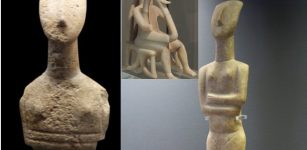 The Cyclades And Their Advanced And Mysterious Society Lost In Time
Featured Stories | Apr 25, 2022
The Cyclades And Their Advanced And Mysterious Society Lost In Time
Featured Stories | Apr 25, 2022 -
 The Perplexing Story Of The Seven Continents And The Seven Mysterious Races – Can The Past Foretell The Future? – Part 2
Featured Stories | May 15, 2022
The Perplexing Story Of The Seven Continents And The Seven Mysterious Races – Can The Past Foretell The Future? – Part 2
Featured Stories | May 15, 2022 -
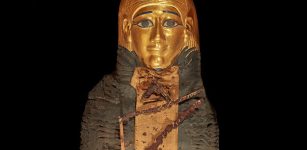 Egyptian ‘Golden Boy’ Mummy Was Protected By 49 Precious Amulets On His Journey To The Afterlife – CT Scans Reveal
Archaeology | Jan 24, 2023
Egyptian ‘Golden Boy’ Mummy Was Protected By 49 Precious Amulets On His Journey To The Afterlife – CT Scans Reveal
Archaeology | Jan 24, 2023 -
 Cave Hidden Under Pembroke Castle in Wales Could Hold Secrets Dating Back 10,000 Years
Archaeology | Jul 16, 2022
Cave Hidden Under Pembroke Castle in Wales Could Hold Secrets Dating Back 10,000 Years
Archaeology | Jul 16, 2022 -
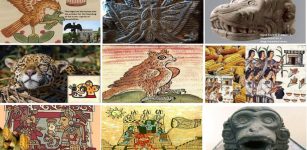 10 Aztec Symbols Explained
Ancient Symbols | Mar 20, 2018
10 Aztec Symbols Explained
Ancient Symbols | Mar 20, 2018 -
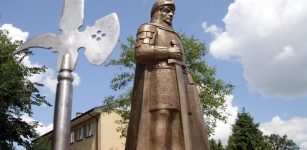 Zawisza Czarny: Most Famous Polish Knight And The Quest For His Family Home
Featured Stories | Apr 26, 2016
Zawisza Czarny: Most Famous Polish Knight And The Quest For His Family Home
Featured Stories | Apr 26, 2016 -
 Neanderthals Invented Or Developed Birch Tar Making Technique Independently From Homo sapiens
Archaeology | May 30, 2023
Neanderthals Invented Or Developed Birch Tar Making Technique Independently From Homo sapiens
Archaeology | May 30, 2023 -
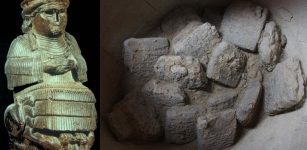 Sensational Find: Huge Cuneiform Archive Of Mysterious Ancient Clay Tablets Discovered In Iraq
Archaeology | Oct 26, 2017
Sensational Find: Huge Cuneiform Archive Of Mysterious Ancient Clay Tablets Discovered In Iraq
Archaeology | Oct 26, 2017 -
 Nottingham Scientists Investigate An Ancient Boat Buried Under A Pub Car Park
Archaeology | Feb 15, 2023
Nottingham Scientists Investigate An Ancient Boat Buried Under A Pub Car Park
Archaeology | Feb 15, 2023 -
 America’s First Civilization Was Made Up Of ‘Sophisticated’ Engineers – New Evidence
Archaeology | Sep 2, 2021
America’s First Civilization Was Made Up Of ‘Sophisticated’ Engineers – New Evidence
Archaeology | Sep 2, 2021 -
 Krampus Celebrations Are Becoming Dangerous – Historian Warns
Ancient Traditions And Customs | Dec 10, 2019
Krampus Celebrations Are Becoming Dangerous – Historian Warns
Ancient Traditions And Customs | Dec 10, 2019 -
 On This Day In History: Thor Heyerdahl Sails From Morocco On Papyrus Boat Ra II To Barbados – On May 17, 1970
News | May 17, 2016
On This Day In History: Thor Heyerdahl Sails From Morocco On Papyrus Boat Ra II To Barbados – On May 17, 1970
News | May 17, 2016 -
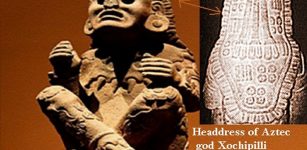 Xochipilli: Aztec God Of Love, Music, Song And Ecstatic Mushroom Trance
Aztec Mythology | May 19, 2018
Xochipilli: Aztec God Of Love, Music, Song And Ecstatic Mushroom Trance
Aztec Mythology | May 19, 2018 -
 What Were Victorian Bathing Machines?
Ancient History Facts | Jun 9, 2018
What Were Victorian Bathing Machines?
Ancient History Facts | Jun 9, 2018 -
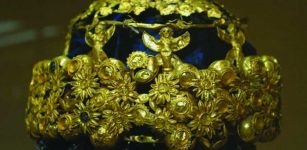 Long-Lost Mesopotamian Queen Hama Discovered By Student Just By Reading Books
Archaeology | Feb 14, 2019
Long-Lost Mesopotamian Queen Hama Discovered By Student Just By Reading Books
Archaeology | Feb 14, 2019 -
 Mysterious El Caracol At Chichen Itza: What Did Maya Astronomer-Priests Observe In The Sky?
Archaeoastronomy | May 24, 2019
Mysterious El Caracol At Chichen Itza: What Did Maya Astronomer-Priests Observe In The Sky?
Archaeoastronomy | May 24, 2019 -
 Mysterious Camerano Underground City – Secret Meeting Place For Knights Templar?
Featured Stories | Dec 13, 2017
Mysterious Camerano Underground City – Secret Meeting Place For Knights Templar?
Featured Stories | Dec 13, 2017 -
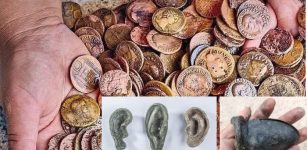 Extraordinary Etruscan And Roman Treasure Trove Unearthed In San Casciano dei Bagni, Italy
Archaeology | Aug 12, 2022
Extraordinary Etruscan And Roman Treasure Trove Unearthed In San Casciano dei Bagni, Italy
Archaeology | Aug 12, 2022 -
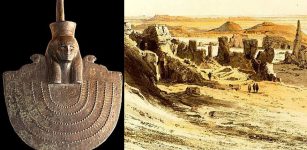 City Of Sais: Prehistoric Prestigious Cult Center Of Northern Egypt
Featured Stories | Oct 31, 2016
City Of Sais: Prehistoric Prestigious Cult Center Of Northern Egypt
Featured Stories | Oct 31, 2016


